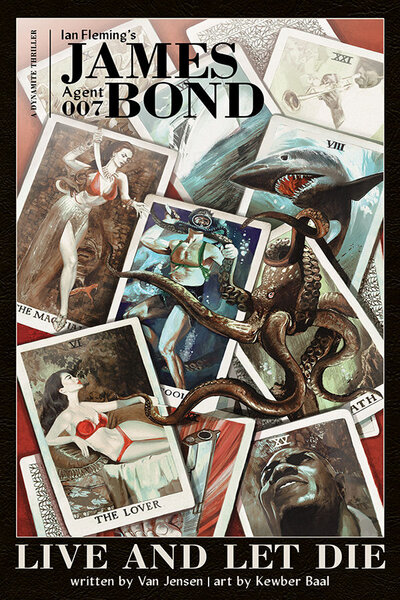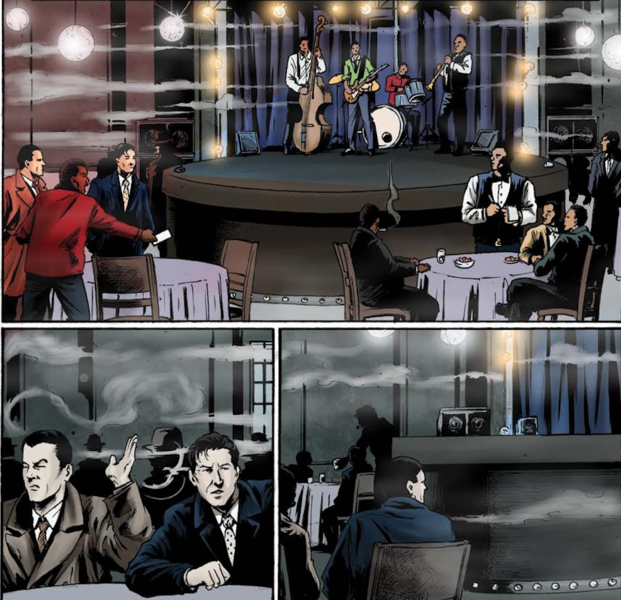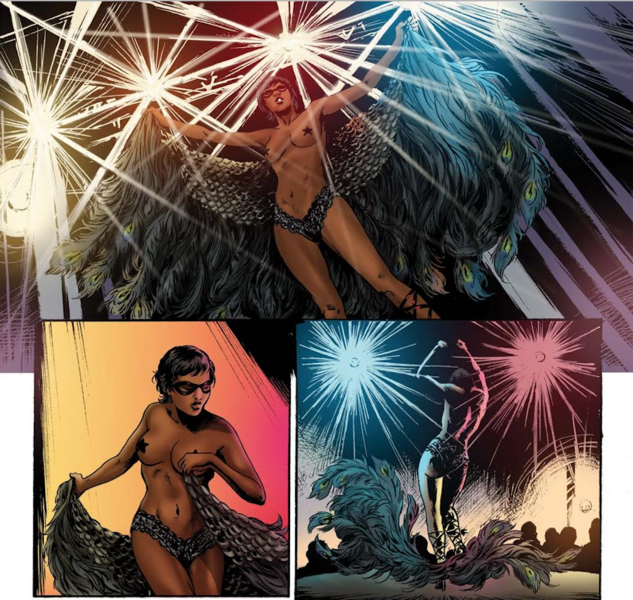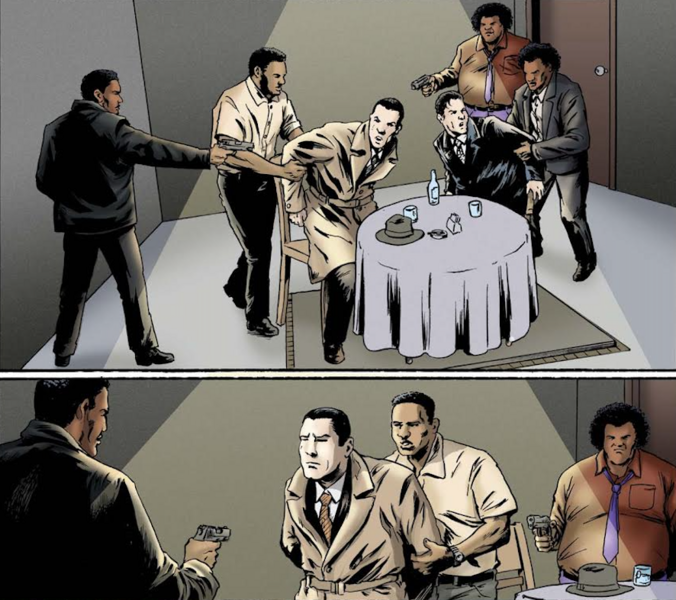Create a free profile to get unlimited access to exclusive videos, sweepstakes, and more!
James Bond infiltrates comics in Dynamite's adaptation of Live and Let Die
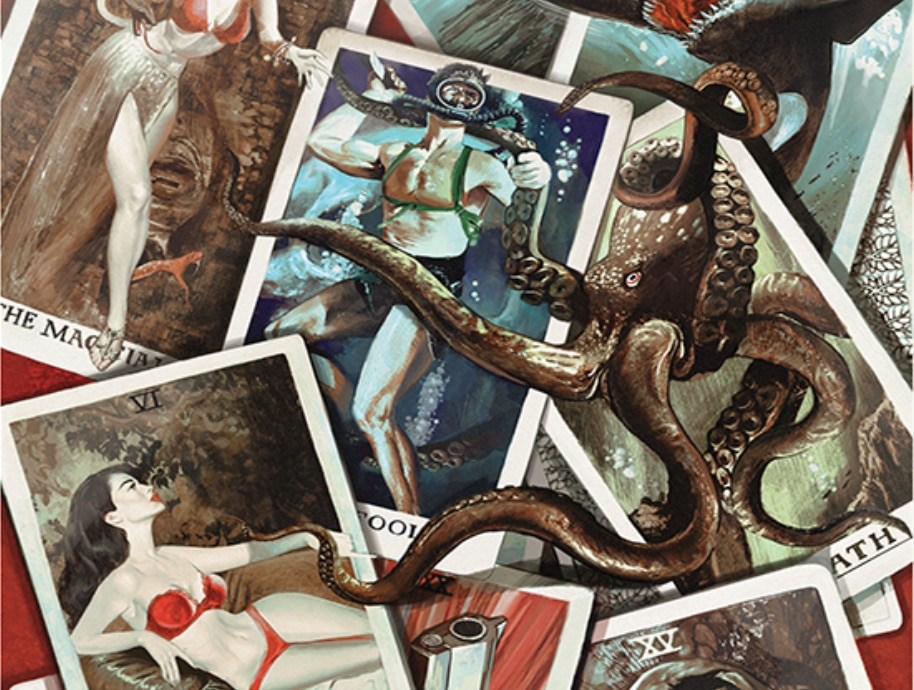
The debonair superspy James Bond infiltrates evil organizations for one of his most challenging missions ever in Ian Fleming's Live and Let Die, and now 007's thrilling adventure is coming to comic pages. Dynamite Entertainment is set to release a deluxe, 168-page hardcover graphic novel adaptation of the classic Bond tale, gaining access to comic shops and bookstores on November 5.
The graphic novel brings Fleming's second Bond book to life, with a story from New York Times bestselling author Van Jensen (Flash, Green Lantern Corps) and illustrations by Kewber Baal (Army of Darkness, Jennifer Blood). Granted, it's not the first time that Fleming's 1954 classic has been adapted to another medium. It was made into a memorable feature film in 1973, directed by Guy Hamilton and starring Roger Moore and Alien's Yaphet Kotto. (That film also featured one of the best Bond movie theme songs ever in Paul McCartney's "Live and Let Die.")
But the graphic novel version of the story offers Bond fans a unique new way to experience the classic spy tale, as Dynamite CEO and Publisher Nick Barrucci notes.
"James Bond is one of the all-time best characters across fiction and we continue to be proud to work so closely with Ian Fleming Publications to bring these prestigious stories to the comics and graphic novel format," Barrucci says. "Fleming only wrote so many classic novels, so we want to make sure each adaptation is planned and executed perfectly."
Live and Let Die's writer, Jensen, already achieved great success with his first foray into Bond lore with last year's graphic novel adaptation of Ian Fleming's Casino Royale, and here he applies his talents to the smooth, martini-sipping secret agent with the utmost flair and sophistication.
Live and Let Die follows Agent 007 as he tracks stolen pirate treasure from the smoke-shrouded jazz clubs of Harlem to the steamy Florida Everglades and wicked white sands of Jamaica. The splashy storyline sees Bond sent across the Atlantic Ocean to the Big Apple to investigate "Mr. Big," an especially slippery agent of SMERSH and a ruthless criminal voodoo warlord. Never daunted by simple superstition and enlisting the aid of his CIA pal, Felix Leiter, Bond hunts down "Mr. Big" with all his enviable resources and operative instincts to take down the criminal bigshot in a battle of wills not even the tempting tarot-card reader, Solitaire, can predict.
In an interview with SYFY WIRE, Jensen calls Live and Let Die an "intense sprint, full of huge action and terrifying villains," and explains how this project differs from the Casino Royale translation, details the specific guidelines the Ian Fleming Estate gave him, and lets readers know what they can expect as they slip into the superspy adventure realized by Kewber Baal's striking artistic interpretations.
After the writer comments, stay tuned for an expanded unlettered page preview in the full gallery below!
What was your approach to the source material and what aspects of the Bond character did you hope to highlight?
Van Jensen: Having come in from doing Casino Royale first was that I had worked up a nice relationship with the Ian Fleming Library and Dynamite editorial so we had a smooth process. Where Casino Royale is a slow, small book in a lot of ways, Live and Let Die is where you first start to see the big bold action and some of the tropes of James Bond.
This one was fun in that you get Bond right after coming through a tragedy so he's into that hard-nosed spy mode and there's all this epic stuff going on all around him? It's got Mr. Big, this great villain, fighting underwater, it's got chases, a big action sequence in a warehouse full of exotic fish and aquariums. It's all big visuals and action set pieces. Live and Let Die is tailor-made for a comic book and obviously for a movie too.
How was the process of adaptation here different from Casino Royale?
It was pretty similar in terms of that I'd take a copy of the novel with a pen and go through it, read it once, then go through it second time and mark it up and carve the prose into visual notes. This is a page, this is a panel, this is the narration I really need. It's a lengthy process and as much as I love books I really had to scribble a lot in these novels.
From there it's sitting down and translating those notes into an actual script. The process didn't change, it was just a lot easier. The Fleming Estate is very particular about Bond and so they want these things to be good and to maintain Ian Fleming's voice. So we'd figured out a great relationship on Casino so with Live and Let Die I knew what their expectations were and was able to go and tackle it a little bit more carefree.
What were the Bond films of your generation that you grew up with and loved?
I'm a bit of an oddball in that I grew up in the '80s but where I grew up was super removed. My family had run a movie theater and it was this big thing that growing up I'd watch the movies my grandmother would tape off of cable. So I'd watch the films that had played at our theater so I really grew up on '40s, '50s, '60s, '70s cinema. The Timothy Dalton Bond movies I didn't see them until quite a bit later. The Sean Connery and Roger Moore James Bond were the ones I loved the most as a kid. Particularly Roger Moore, they're just so big and colorful and kinda silly.
What sort of guidance or advice did the Fleming Foundation give you in working on this Bond project?
It's pretty funny working with them. One, these are Fleming's relatives so I'm actually talking to his family and going back and forth with them, which is pretty amazing. And I'm a big literature guy so to interact with people who are so legendary is pretty neat. But it's also very granular and specific work.
So it's down to stuff like "this is exactly the type of material and cut of bathrobe that James Bond is wearing." Or "this is the way he wears his watch." Just very hyper-specific stuff. And there's some real strong racism and misogyny in those books that's not common to books of that era. We'd have conversations about how do we represent that stuff and where are there things we can cut, and acknowledge that these books were a work of a very different time. And they were gracious about working through those issues as well.
How does Kewber's art convey the nuances and tone of your narrative and how did the collaboration work?
Kewber is great to work with. He does beautiful work, he's very kind, generous with his time, and very thoughtful. He's not in the states so there's a lot of distance between us, so most of the communication was over email. There were times where I'd help him out by pulling visual references to send his way. It's a tough gig because the Fleming Family is specific about what they want so that manifests in a big way on the visual side. As an artist, you get a lot of notes and he was really professional in knocking all that out of the park.
